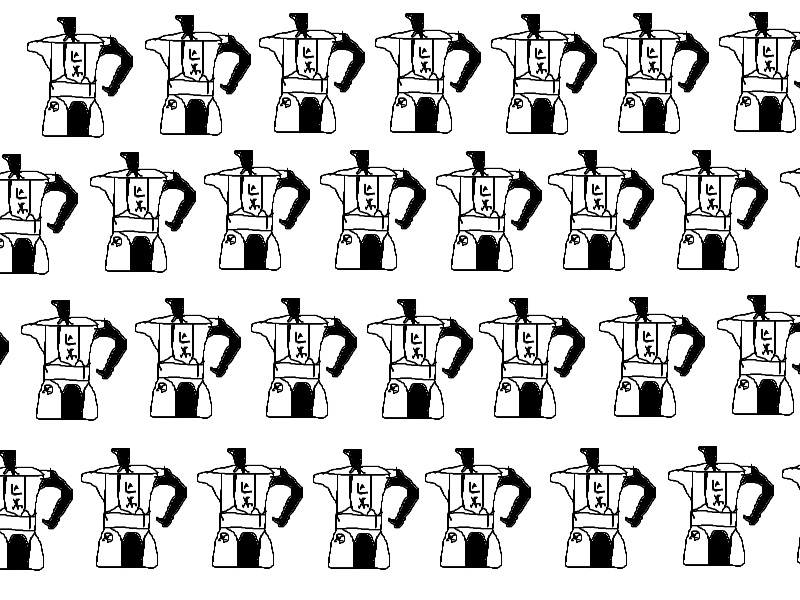I love my Moka pot, I use it almost every day and it gives me a level of indescribable joy.
For those of you who don’t know, I’ll explain what a Moka pot is first…and no, a moka is not the chocolatey-milky Mocha you order in a café.
The Moka pot is a stove top coffee maker that was first manufactured by Italian coffee company Bialetti in 1933. Made of metal and originally with black Bakelite handle and lid, it soon became one of the most recognisable (and used) coffee makers on the planet.
Since then, its design has been copied by many other companies, but Bialetti’s Moka Pot remains an icon of Italian culture and general sophistication.
It has three main components: a base, which you fill with water, a basket, which you fill with ground coffee beans and place on top, and then the pot itself with a pouring spout, which holds the coffee.
The Moka Pot makes its own unique and (in my opinion) delicious type of coffee. I would describe it as having strength closer to espresso, and a texture and finish closer to that of filter coffee or a French press brew.
Typically, I speedily drink it in a small espresso-sized cup before I get on with my day.
One of the things I love about my Moka pot, above the coffee it creates, is the simple, familiar and immensely satisfying routine of using it.
The Routine:
- First, I grab my coffee grounds from the fridge (as it has usually been opened this helps maintain its freshness).
- Then, I boil my kettle – on the recommendation of world famous barista James Hoffman that boiled water poured into the base speeds up the brewing time and results in a less bitter taste.
- Once the base is filled up to the little valve, I place the basket on top and add my teaspoons of coffee grounds until it is full. I never press it down. This is an important step. Don’t ever compress the coffee else the whole thing might explode.
- I then carefully screw on the top and place it on the stove on a medium heat.
- Within a few minutes, the water pressure builds and bursts through the coffee grounds making fresh golden coffee suddenly and joyously appear in the pot. This has to be one of the most fun parts of using a Moka pot, simply seeing beautiful coffee being made before your eyes.
- I then quickly cool down the base under cold water to stop it boiling, and pour the freshly made coffee into a small cup, enjoying whilst I eat my breakfast and read through the headlines and try to maintain a level of optimism.
- When I bother to clean it (it may get left out on the side for hours if I’m in a hurry), I unscrew the top and take out the basket and dump the coffee grounds in the bin. I then rinse the whole thing with warm water and a little washing up liquid. It takes seconds for its original shine to return and never gets that dirty as a result.
Another thing I love about my Moka pot is the fact that it is such a great example of good design – it does exactly what it says and has no unnecessary frills. This explains why essentially it has not changed in over 80 years.
It is truly timeless, a rarity in a world of trends that appear and disappear instantaneously, with a hyper-swiping population of semi-bored people consuming mass-produced content.
Simply looking at the thing reminds me to slow down, and take a moment to feel both my feet on the ground.
Now you may try coffee from a Moka pot and dislike it, or perhaps the appearance of the thing doesn’t appeal to you (although I’d fight you on that), but even if that is the case, I hope this is a reminder to get yourself (if not a Moka pot), your own equivalent. Maybe it’s a French press, one of those coffee pod machines, or a fancy barista standard one with milk steamer and all. Or, maybe it’s a teapot (if you prefer tea), or one of those milk frothers to make hot chocolate – literally anything that lasts, and that forces you to have a silly little routine.

I still use my late Italian grandfather’s Mocha (he passed in 1983) and love the dang thing. Sometimes I use ground French roast beans, sometimes I use Bustelo ground coffee, but it’s always excellent.